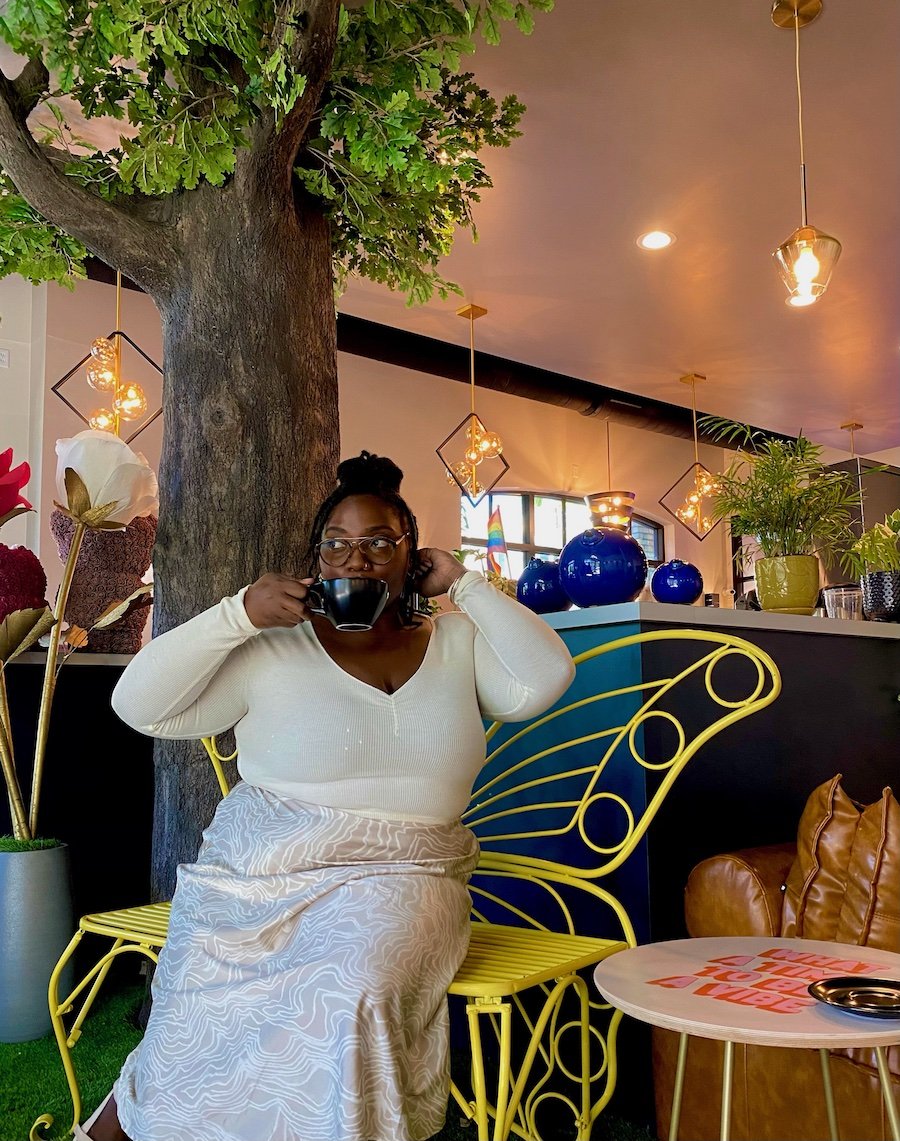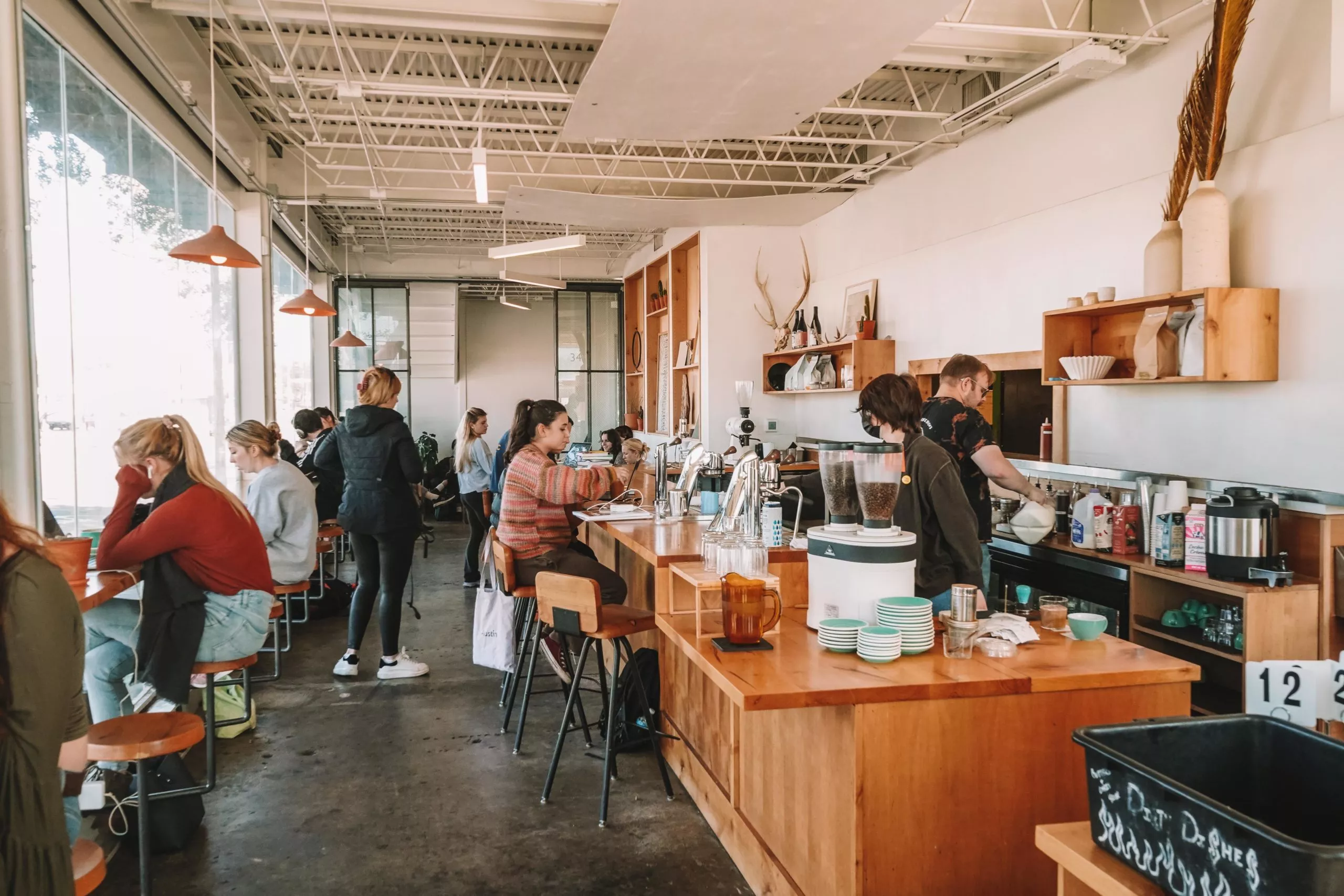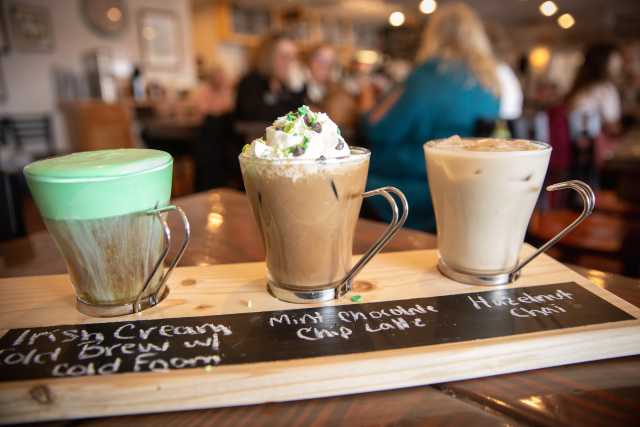Uncovering the very best Developing Methods for Perfect Coffee
Exploring the various brewing approaches for coffee can substantially elevate one's appreciation for this facility drink. Each strategy, from the durable splendor of the French Press to the careful accuracy of pour-over brewing, offers an one-of-a-kind flavor experience that accommodates varied palates. In addition, approaches such as coffee and cool mixture provide their own distinctive qualities, while the Aeropress stands apart for its versatility. Recognizing these approaches not just improves the brewing procedure however likewise elevates fascinating questions concerning personal choices and taste accounts that merit additional examination.

French Press Brewing Strategy
The French Press developing method is a traditional method that allows coffee fanatics to extract abundant and full-bodied tastes from their coffee grounds. Brooklyn Coffee Shops. This method, additionally referred to as a press pot or bettor pot, entails steeping coarsely ground coffee in warm water before separating the premises with a metal or nylon mesh filter
To prepare coffee utilizing a French Press, start by including coarsely ground coffee to the carafe, usually at a proportion of 1:15 coffee to water. Warm water to just below steaming, around 200 ° F(93 ° C), and pour it over the coffee premises. Mix carefully to make certain even saturation and let the blend steep for about 4 minutes. After steeping, firmly press the plunger to divide the grounds from the made coffee.
The result is a aromatic and robust mug that maintains the natural oils from the coffee grounds, giving an unique structure and taste account. This developing strategy is favored for its simplicity and capability to display the special attributes of different coffee beans. The French Press welcomes experimentation with grind size, high time, and coffee-to-water ratios, permitting users to customize their brewing experience.
Pour-Over Approach Explained
Pour-over brewing is a meticulous technique that permits coffee fans to work out control over every element of the developing process, resulting in a vivid and tidy cup of coffee. This technique includes pouring warm water over coffee premises in a filter, enabling the water to essence flavors progressively as it passes through.
To begin, it is necessary to choose top notch, freshly baked coffee beans, preferably ground to a medium-coarse uniformity. The selection of water temperature is crucial; ideally, it ought to be between 195 ° F and 205 ° F(90 ° C to 96 ° C) to enhance removal without scalding the coffee.

The complete mixture time need to range from three to four minutes, depending on the preferred stamina and flavor account. The pour-over method, beloved for its clearness, delivers a nuanced mug that highlights the coffee's distinct features, making it a preferred amongst fanatics and purists alike.
Espresso Essentials
Espresso brewing stands in contrast to the pour-over approach, providing a concentrated shot of coffee that showcases bold flavors and rich crema. This developing technique relies upon compeling hot water via finely-ground coffee under high stress, usually around 9 bars. The result is a small, extreme volume of coffee that functions as the foundation for various espresso-based drinks, such as macchiatos, coffees, and lattes.
Key components of an effective espresso shot consist of grind size, tamping stress, water temperature level, and removal time. The work dimension should be great to promote optimal removal, while consistent tamping makes sure also water flow with the coffee premises. Water temperature should ideally vary between 90 to 96 degrees Celsius to avoid under-extraction or over-extraction, which can lead to unwanted flavors.
Espresso machines come in various types, from hand-operated bar machines to automated systems, each accommodating different skill levels and preferences. Grasping the art of espresso brewing can be a rewarding experience, enabling coffee lovers to appreciate the intricacy and depth of flavors that this approach can generate. Eventually, the espresso functions as a functional base for countless coffee developments.
Cold Mixture Process
Cold brew coffee has gained appeal for its smooth, smooth taste profile and low acidity, making it an enticing choice for several coffee drinkers. The cold brew procedure is distinct from traditional brewing techniques, making use of a steeping method that extracts tastes over an extended duration without warm.

When soaking is complete, the coffee is filtered to eliminate the premises, causing a concentrated mixture that can be diluted with water or milk before offering. The reduced developing find this temperature level decreases level of acidity and resentment, creating a wonderful and rejuvenating beverage.
Cold mixture can be served over ice, mixed right into healthy smoothies, or enjoyed directly, making it versatile for various choices. With its unique taste and smooth finish, the cold mixture procedure has solidified its location amongst the favored developing approaches for coffee enthusiasts.
Aeropress Benefits
While many developing techniques have their one-of-a-kind values, the Aeropress sticks out for its flexibility and simplicity of use. This cutting-edge gadget permits coffee fanatics to trying out various brewing specifications, such as grind dimension, water temperature level, and steeping time, allowing the creation of a tailored cup of coffee customized to individual choices.
One considerable advantage of the Aeropress is its transportability. Light-weight and portable, it is a perfect choice for tourists and exterior lovers that want a quality mixture on the move. Moreover, the Aeropress is built from long lasting products, guaranteeing it endures the rigors of travel.
The developing process itself is remarkably simple, making it accessible for both amateur and skilled coffee enthusiasts - Cafe Bistro. With a fast developing time of roughly one to 2 minutes, the Aeropress produces a concentrated coffee comparable to espresso, permitting a rich taste account
In Addition, the Aeropress is very easy to tidy, requiring very little upkeep contrasted to traditional developing techniques. Its convenience includes numerous coffee styles, including chilly brew and even nitro coffee, making it an important enhancement to any coffee enthusiast's arsenal. Overall, go to these guys the Aeropress integrates high quality, ease, and versatility, making it a top choice for coffee connoisseurs.
Final Thought
The expedition of different coffee brewing techniques reveals distinctive qualities and taste accounts that cater to varied preferences. Engaging with these developing methods cultivates a much deeper understanding of coffee's complexity and potential for satisfaction.
To prepare coffee using a French Press, begin by including coarsely ground coffee to the carafe, generally at a proportion of 1:15 coffee to water.Coffee developing stands in comparison to the pour-over method, providing a concentrated shot of coffee that showcases strong flavors and abundant crema. Mastering the art of coffee developing can be a rewarding experience, allowing coffee enthusiasts to value the intricacy and see here depth of flavors that this method can create. Its flexibility extends to various coffee styles, including cold mixture and also nitro coffee, making it a useful enhancement to any kind of coffee enthusiast's arsenal.The exploration of numerous coffee brewing techniques exposes distinctive features and flavor accounts that provide to varied preferences.